Has the fantastical glowing plants from the movie "Avatar" become reality? Thanks to scientists, succulents can now glow!
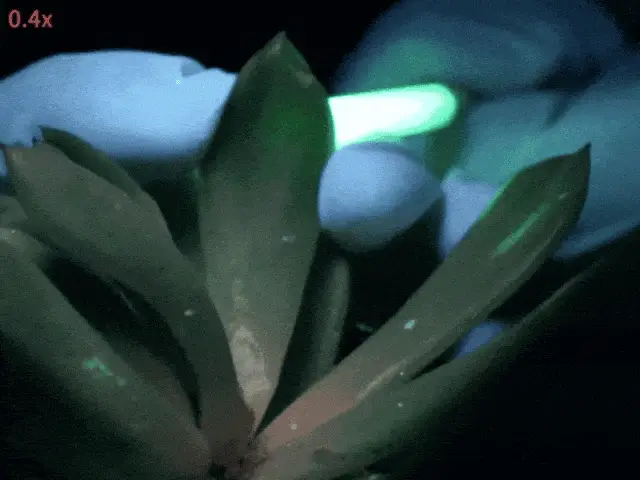
Glowing succulents (Source: File photo)
Recently, Professor Zhang Xuejie's team at South China Agricultural University (SCAU) created the aforementioned glowing succulents. The related paper was published in the Cell journal Matter (IF 17.5).
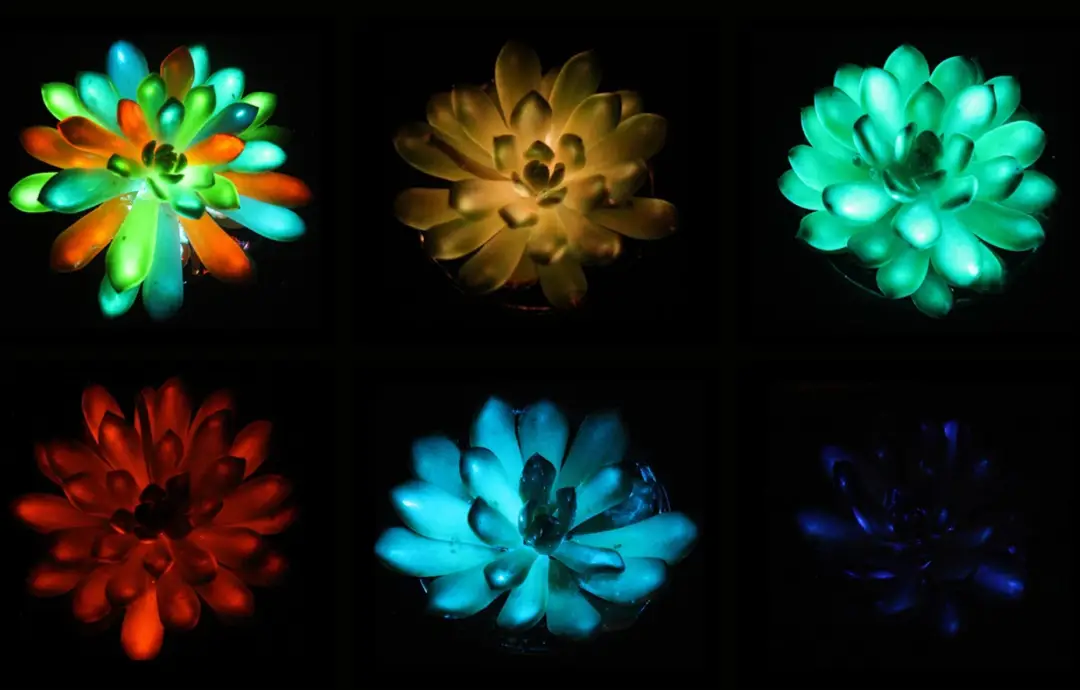
Glowing succulents (Source: Matter)
In their experiments, their SrAl2O4:Eu2+,Dy3+-based green glowing plants emitted a visible afterglow after only two minutes of excitation with UV light or sunlight. This visible glow lasted for up to two hours. By using inorganic long-lasting glow materials of varying compositions, they successfully constructed, for the first time, sunlight-stimulated multicolor luminescent plants—these plants cover a broad spectral range of 400-650nm, encompassing most of the visible spectrum.
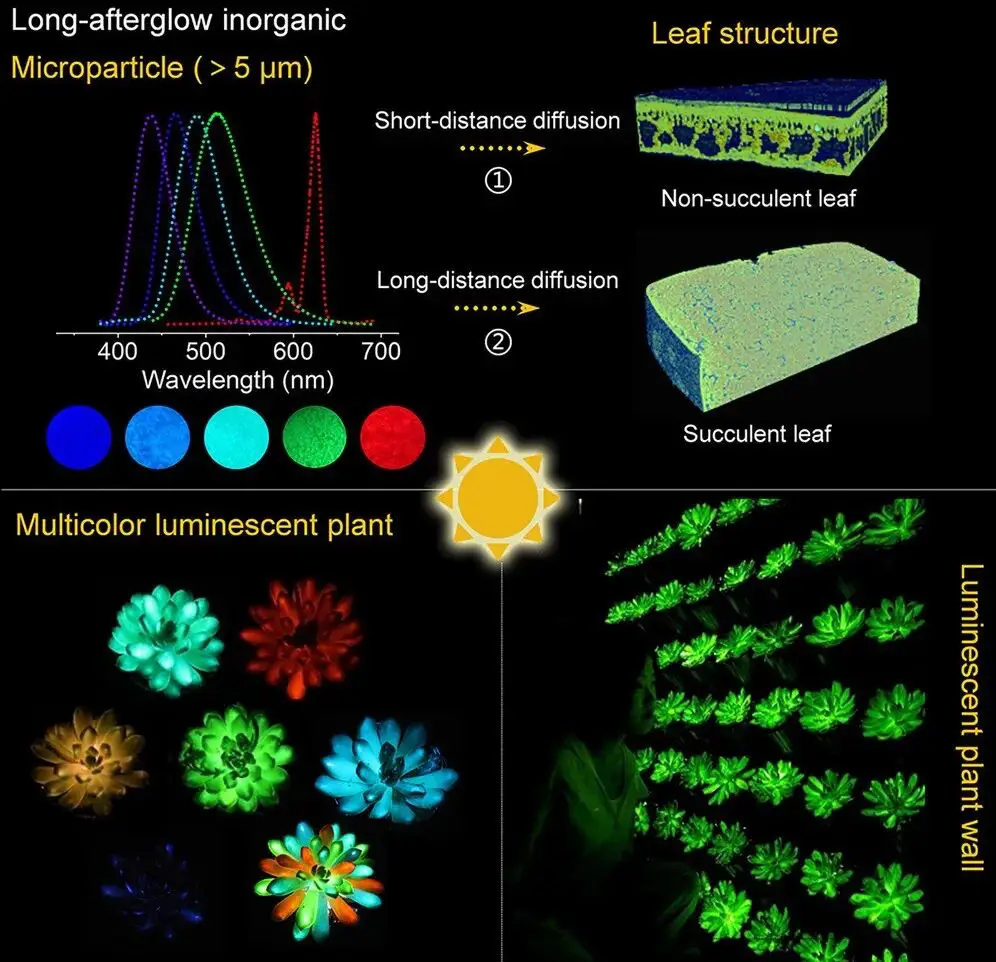
(Source: Matter)
Previous studies have shown that plant tissues severely restrict the transport of particles. Even nanoparticles struggle to achieve rapid and large-scale transport within plants, and the diffusion of micron-sized particles is even more challenging. In the leaves of succulent plants, such as the Echeveria 'Nüchu' plant in the Crassulaceae family, micron-sized afterglow particles (>5 microns) can move rapidly and be evenly distributed. Therefore, the observed movement of micron-sized afterglow particles within succulent leaves is a novel phenomenon.
Reviewers commented that this work demonstrates a highly interdisciplinary approach, integrating materials science and plant biology, and proposing a sustainable and biocompatible light storage and emission strategy. The integration of functional luminescent particles into plant biological systems is rigorously designed and efficiently implemented, and the concept holds promise for applications in green lighting, display technology, and interactive biodevices.
If the team can further significantly increase the brightness and duration of plant luminescence in subsequent research, while also fully verifying its biosafety, this achievement is expected to have diverse applications. For example, it could serve as a decorative luminescent plant ornament. Furthermore, it could be used in low-brightness lighting scenarios, such as providing low-brightness illumination for plants in parks at night.
It is understood that the research team has long focused on the research of luminescent materials, covering systems such as nitrides, nitrogen oxides, fluorides, aluminates, and hybrid materials, and actively exploring their applications in display technology, plant growth promotion, and bioimaging. For example, they have used carbon dots to enhance plant photosynthesis efficiency and long-lasting glow materials to encode information in living plants. Based on this accumulated research, they remain committed to improving the performance of luminescent materials and exploring their practical applications in plants.
Luminescent plants, as a plant-based lighting source with both low-carbon and green properties, are a cutting-edge and fascinating research direction. Seeing the work of previous researchers in achieving luminescent plants through genetic engineering, they were inspired to conceive of and aspire to create "plant lights."
However, few studies have attempted to construct luminescent plants from a materials perspective. The work of a team at the Massachusetts Institute of Technology (MIT) provided significant inspiration. They used submicron-sized green, inorganic, long-lasting luminescence particles to transform mesophyll cells into photonic capacitors, enabling plants to achieve afterglow luminescence.
However, such research still faces several limitations:
- Nano- and submicron-sized materials have numerous surface defects, resulting in weaker luminescence performance than micron-sized afterglow materials. Consequently, the plants' light storage efficiency is limited, making it difficult to efficiently capture and release solar energy.
- The complex tissue structure within plants hinders the uniform diffusion of luminescent materials. Previous studies have shown that even nano- and submicron-sized particles struggle to achieve large-scale, uniform transport within leaves, resulting in uneven luminescence distribution.
- Whether genetically engineered or engineered, the emission spectrum of living luminescent plants remains primarily concentrated in the green band (approximately 500–570 nm), significantly limiting the potential for expanding their applications.
It is precisely against this backdrop and facing these challenges that they launched research into using micron-sized, long-lasting luminescent materials to construct luminescent plants, hoping to achieve new breakthroughs in performance improvement and application expansion.
To accomplish this research, the team constructed a roughly one-meter-tall "luminescent plant wall" in their laboratory. When it truly lit up in the dark, many lab members were amazed, convinced of the magical effect and rushed over to witness it. Later, they even took photos around the plant wall to showcase its low-light illumination.
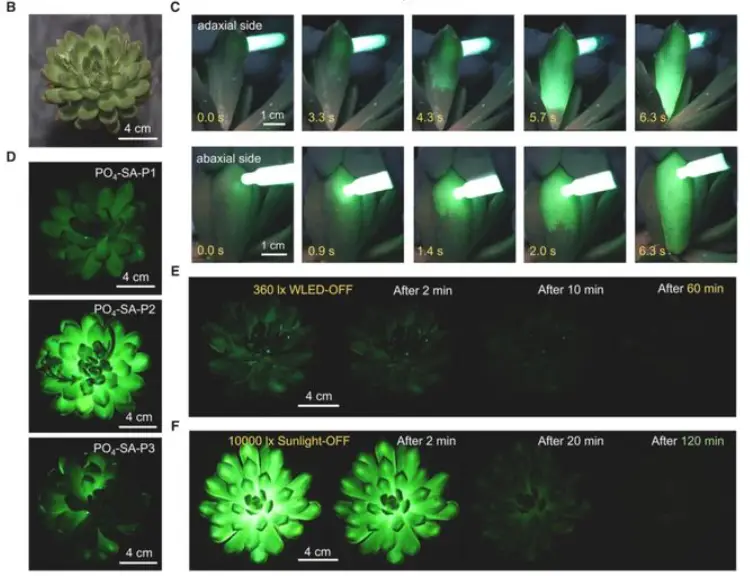
(Source: Matter)
During their research, they conducted numerous experiments: testing luminescent materials of varying particle sizes and properties, various loading methods, and even different plant species. However, most of the results were inconsistent or failed. When they saw the rapid and multi-directional diffusion of micron-sized particles within the leaves of a female chick, they were truly astonished and couldn't help but wonder, "Is this true? Is it really that amazing?" Even more exciting, the experimental results were easily replicated. "That feeling of reaping the rewards of hard work is truly profound," said Zhang Xuejie.
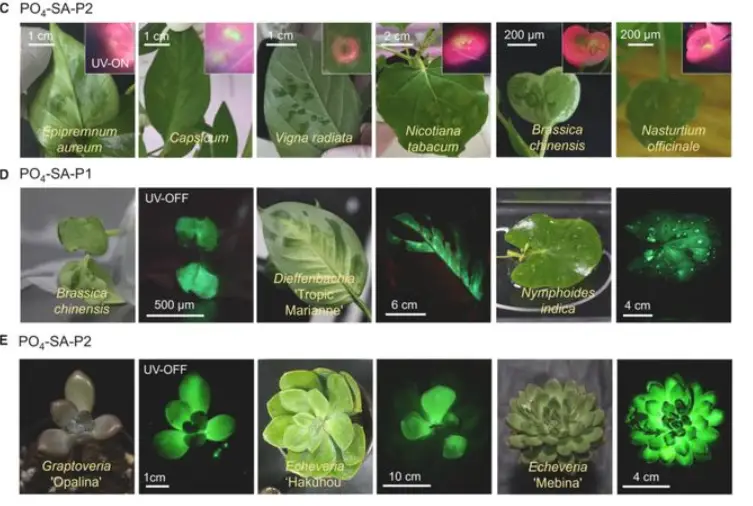
(Source: Matter)
In addition, when they directly "saw" the luminescent particles quickly shuttling through the plant tissue through a microscope. Originally, everyone's expectations were very "conservative". After all, the leaves are not transparent, and the leaves of succulent plants are relatively thick. They thought they could not see the internal situation clearly. However, when they used a fluorescent inverted microscope to observe, they could actually see these micron particles transported freely and quickly under the action of external pressure, as if a "high-speed channel" had been opened up in the leaves. "That moment made us re-understand the possibility of combining materials and plants." Zhang Xuejie told DeepTech.

Zhang Xuejie (Source: Zhang Xuejie)
Finally, the relevant paper was published in Matter under the title "Sunlight-powered multicolor and uniform luminescence in material-engineered living plants".
Paper link >> https://www.cell.com/matter/abstract/S2590-2385(25)00413-8

(Source: Matter)
The prospect of luminescent plants is indeed very attractive. Imagine a real green plant that can serve as a decoration, glow like a lamp, and even be "recharged" by solar energy. This concept is undoubtedly both intriguing and meaningful. However, to truly transform this idea into practical application, they still need to overcome several key challenges.
- First, the brightness and duration of luminescent plants, using natural sunlight as energy storage, still need to be significantly improved. Current brightness levels are far from meeting lighting needs.
- Second, it is necessary to explore how to expand the strategy of creating luminescent plants using long-lasting glow materials to more plant types, especially large plants. This may be achieved by in-depth research on the effects of different plant tissue structures on the transport and diffusion of luminescent particles.
- Finally, it is equally crucial to conduct systematic, long-term biosafety studies on long-lasting glow particles. This includes not only the effects on the plants themselves, but also their potential impacts on animals and the environment. Only after safety is fully verified can this technology be applied in real-world scenarios.
Regarding the incubation of research results, Zhang Xuejie said that they have not started a business yet, but some companies have contacted them and are discussing with them the commercial application prospects of the research results.




